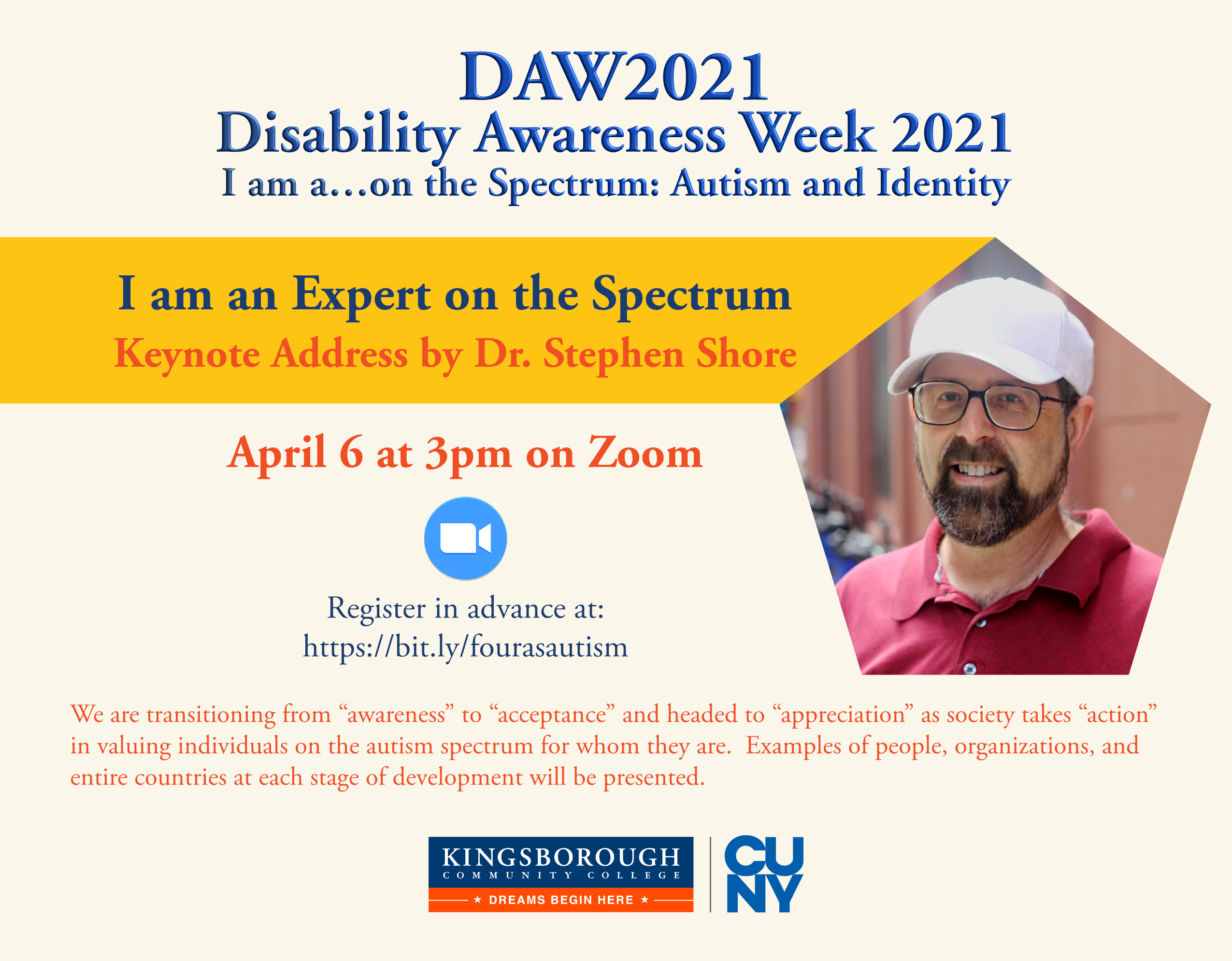4 A’s of Autism

4 A’s of Autism
Biography
Diagnosed with "Atypical Development and strong autistic tendencies" and "too sick"
for outpatient treatment Dr. Shore was recommended for institutionalization. Nonspeaking
until 4, and with much support from his parents, teachers, wife, and others, Stephen
is now a full time professor at Adelphi University and adjunct at NYU Steinhardt School
of Culture, Education, and Human Development, focusing on aligning best practice in
supporting autistic people to lead fulfilling and productive lives.
In addition to working with children and talking about life on the autism spectrum,
Stephen is an internationally renowned educator, consultant and author on lifespan
issues pertinent to education, relationships, employment, and self-advocacy. His most
recent book College for Students with Disabilities combines personal stories and research
for promoting success in higher education.
A current board member of Autism Speaks, the Organization for Autism Research (OAR),
American Occupational Therapy Foundation (AOTF), president emeritus of the Asperger/Autism
Network, and advisory board member of the Autism Society, Dr. Shore also serves on
the advisory boards of AANE, and other autism related organizations.
4 A’s of Autism: Awareness to Acceptance to Appreciation to Action as a Pathway to Fulfilling and Productive Lives
We are transitioning from “awareness” to “acceptance” and headed to “appreciation” as society takes “action” in valuing individuals on the autism spectrum for whom they are. Examples of people, organizations, and entire countries at each stage of development will be presented.
Abstract
An autobiographical structure combining experiences of people on the autism spectrum, in making fulfilling and productive lives for autistic individuals the rule rather than the exception will be used to charge participants to reframe their thinking away from deficit, disorder, and deficit towards seeking abilities based on individual strengths. The session ends with generalizing focus on strengths-based thinking to the rest of humanity – and finally, to the audience themselves.
By examining how deficits and challenges so pervasively attributed to autism and other disabilities can be reframed as strengths, this presentation offers practical solutions for considering these characteristics as potential springboards to success in education, employment, self-advocacy, and meaningful engagement in the community for leading fulfilling and productive lives.
A possible example could be a speaking person on the autism spectrum having a special interest in trains and public transportation systems – who has memorized the entire map and schedules of a metropolitan area. As a result, this person may be well prepared for providing public transportation system information to lost patrons because the characteristics of autism are now reframed as strengths.
Communication:
Factual, detailed, truthful, data driven, and perhaps even repetitive. How common is it to ask someone to repeat directions?
Social Interaction:
Enjoy predictability and being with people who understand him. There’s a brief greeting followed by a response to a question, a thank you and the customer departs.
Restrictive Interests:
Refer to this characteristic as a passion or deep interest. Unlike his co-workers
who have to look up this information in a reference, he’s got it memorized and can
access this information much faster than his co-workers.
This individual’s autistic characteristics enable him to outperform his non-autistic
co-workers. While this example describes a person having much speaking ability, this
concept can be generalized to individuals having more significant challenges in communication
and other areas as well.
Learning Objectives
Participants shall be able to…
-
understand the context of awareness and acceptance as a pathway towards appreciation where people on the autism spectrum are valued for whom they are.
-
describe at least 2 examples where a perceived weakness can be considered as a strength for leading a fulfilling and productive life.
-
transition from thinking of autism in terms of deficit, disorder, and disability to an abilities based model of autism by asking what *can* the individual do.
Meeting Registration
